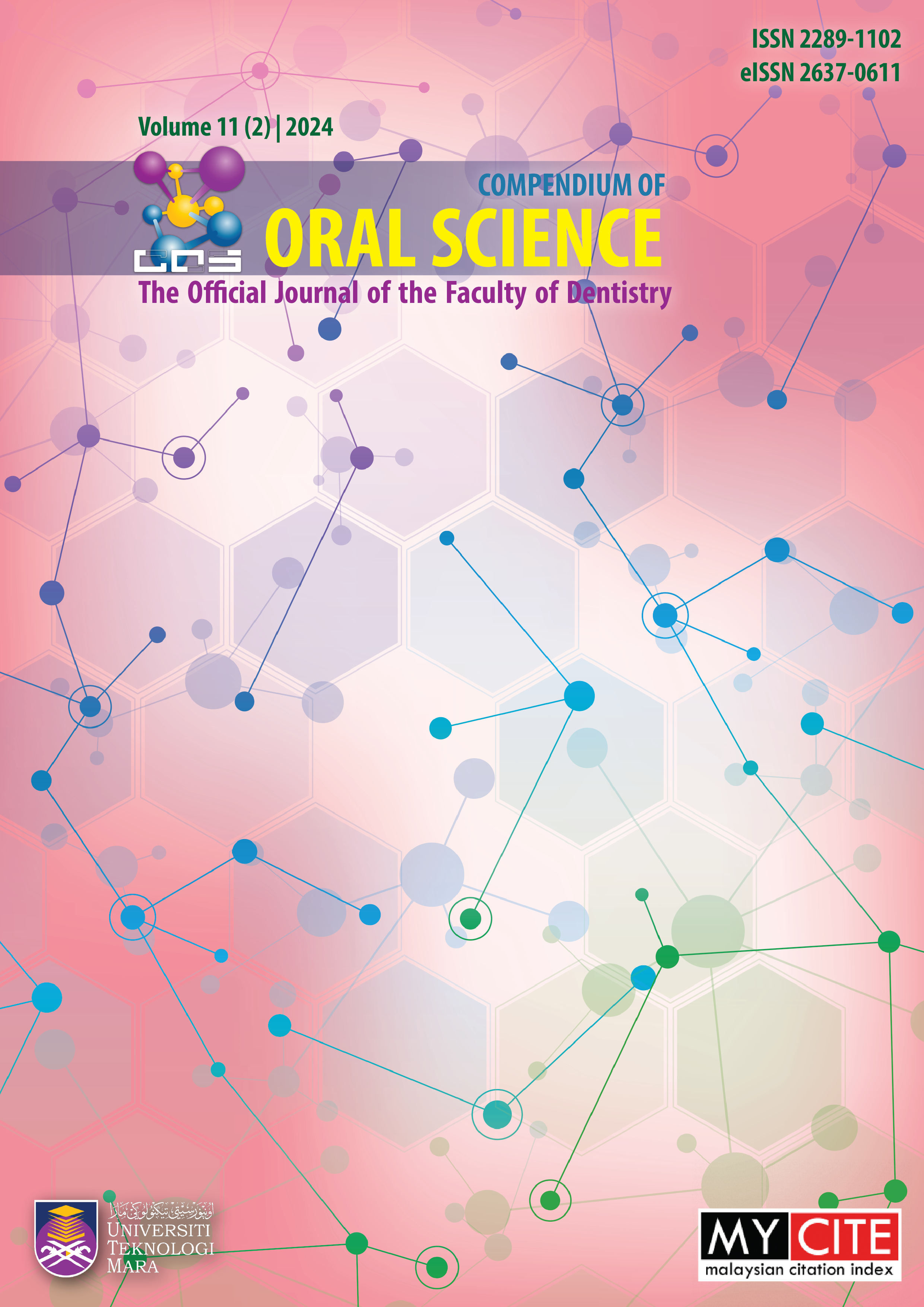Genetic Mechanisms of Oral Leukoplakia: A Systematic Review
DOI:
https://doi.org/10.24191/cos.v11i2.27505Keywords:
genetic, genomic instability, oral leukoplakia, oral premalignant lesions (OPLs)Abstract
Objectives: Oral leukoplakia (OL) is the most common type of oral potentially malignant disorder. It is currently managed through lesion removal either by laser excision or resection. However, its multifactorial aetiology often results in recurrence and cancer transformation. Therefore, findings on novel biomarkers are emerging to understand OL formation and progression towards malignancy. We performed a systematic review to identify the genetic factors for the risk of OL conditions. Methods: The study protocol was registered in PROSPERO, ID: CRD42024497161. We searched PubMed, MEDLINE, Scopus, ScienceDirect, Web of Science, ClinicalKey and Wiley databases from 2018 to 2023. The study was conducted following PRISMA guidelines and articles were selected based on predefined inclusion criteria. Genomic profiles of OL tissues collected from study patients were summarised based on outcome determinants of predictive or diagnostic markers, in relation to OL histopathological features. Results: Seventeen studies met the inclusion criteria. Results showed that OL formation and progression involve genetic factors such as cytokines, proliferation antigen, major histocompatibility complex and CD molecules of lymphocytes, caspase, immune checkpoint, oral cancer key genes, nuclear proteins and transcription factors, toll-like receptor, macrophage and polycomb complex. Among them, the transcription factor p53 is the most investigated factor. However, the cytokine was found to play critical roles in OL progression towards the advanced stages, and is closely associated with dysplastic changes. Conclusion: Exposure to genetic alterations results in OL malignant transformation. Future studies on differential cytokines profiling of differentiated dysplasia, may reveal the novel stage-wise biomarkers for molecular pathological grading.
Downloads
Published
How to Cite
Issue
Section
License
Copyright (c) 2024 Compendium of Oral Science

This work is licensed under a Creative Commons Attribution-NonCommercial 4.0 International License.
Materials contained in the journal may be reproduced for educational purposes provided that both the author(s) and the journal are appropriately recognised; otherwise duplication is not permitted. No articles, reports, or portions there of may be translated into other languages, published in books, journals, magazines, or any other print form without written permission from the authors and from the journal.
Disclaimer: The statements, opinions and data expressed in the articles and reports herein are those of the author(s) and not of the publisher and the editor(s). The publisher and the editor(s) disclaim responsibility for any injury to persons or property resulting from any schemes, methods, instructions or ideas referred to in the content.















